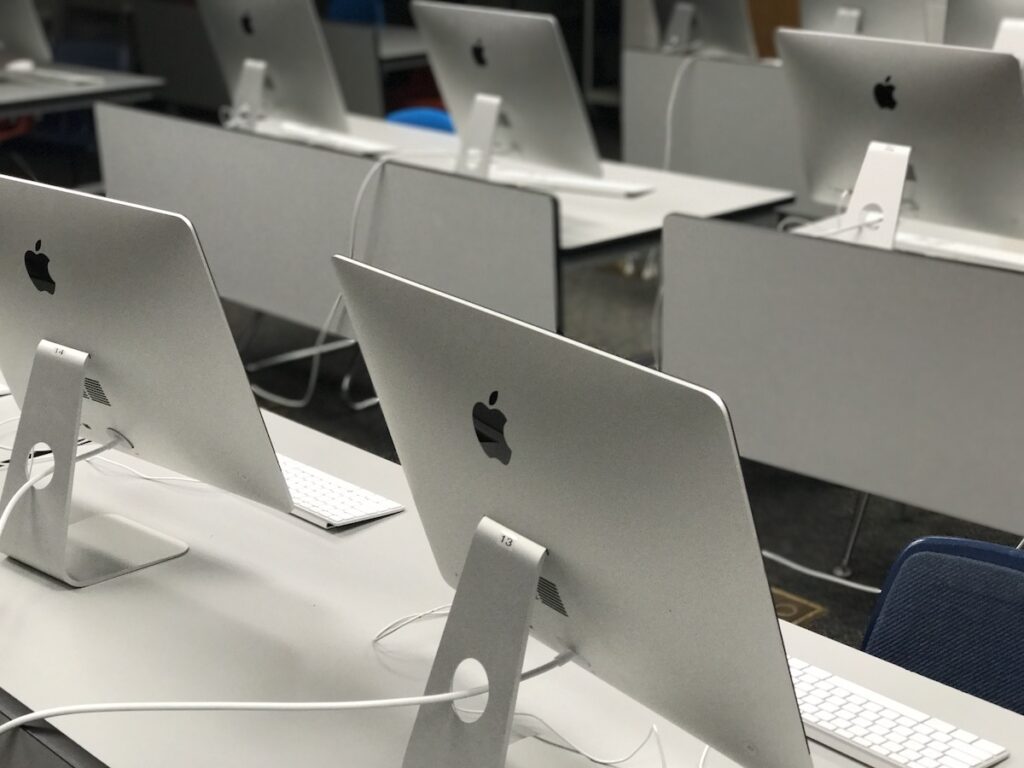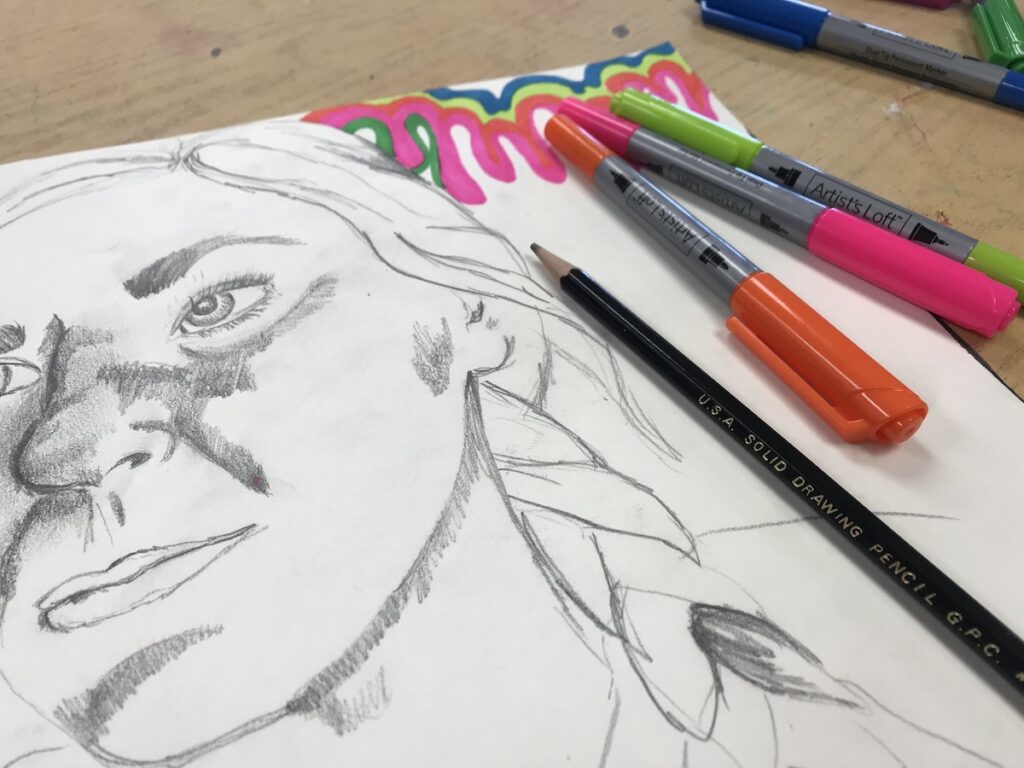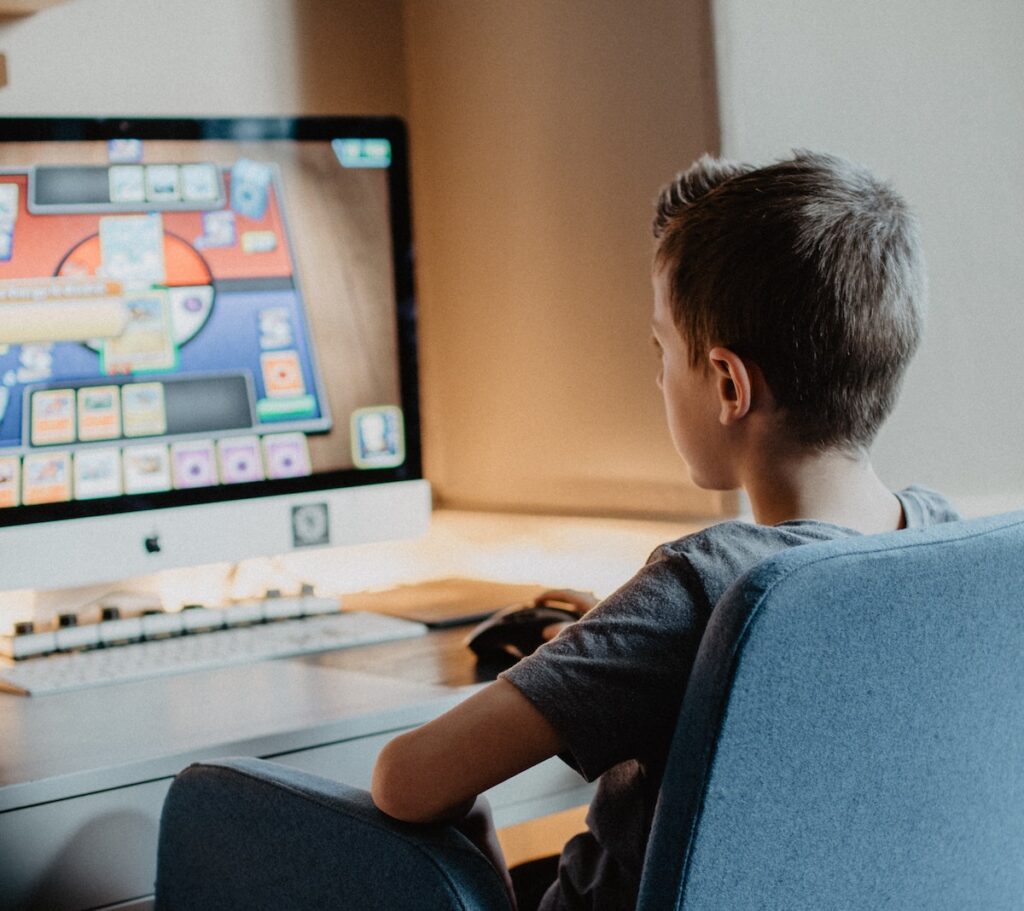Return to Learn with The Art of Education University
Methods of technology-assisted instruction have been surfacing in the education world for years. From asynchronous to synchronous learning to blended and flipped instructional methods, there are many ways technology can help deliver instruction in and out of the classroom setting. For some art teachers, these instructional methods aren’t new, while for others, this way of delivering instruction seems foreign. No matter your comfort level with technology, going back to school this year is forcing all teachers to get out of their comfort zone and learn something new.
New types of instruction will create a learning curve for both students and teachers.
Let’s explore the blended learning model and how you can make it a success in the art room.
The Difference Between Blended and Hybrid Learning
Many educators are heading to school using a blended or hybrid learning model. The terms to describe learning as hybrid and blended are often used interchangeably. However, there are differences in these two learning styles. Blended learning is a combination of in-person and online instruction that includes asynchronous activities. Hybrid learning is a teaching method that allows the instructor to teach both in-person and virtually at the same time.

As part of the blended learning plan, it’s probable that you won’t be seeing your students every single day. While traditionally, blended learning requires some type of online instruction, depending on your school’s technology access, this might look different. For instance, let’s say your students are on an A/B schedule coming to school every other day. On the day they are in-person at school, they will be receiving regular classroom instruction; on the other day, they will be completing an online learning activity. If your school has technology, students will probably be completing an independent activity via a learning management system (LMS). If technology isn’t available, students will be given a supplemental activity that might be in the form of a handout or worksheet. Let’s dig into how blended learning with the use of technology can look in the art setting.
Best Practices for Blended Learning in the Art Room
A study conducted in Research in Learning Technology titled, “Best-practice model for technology-enhanced learning in the creative arts,” examined the best practices for virtual learning in the creative arts. The study found these factors made for a more successful virtual learning environment:
- To motivate students, engagement needed to be the primary focus.
- Content needs to be relevant.
- Students need to feel a sense of confidence and growth in the subject matter.
One crucial component of blended learning is the ability to maximize instructional time. As you’re planning instruction, think about what you’d like to complete in class with your students. When your students are in class with you, you probably want to maximize their artmaking time so you can be with them to troubleshoot any problems or answer questions. So, what kind of activities should your students be doing when they aren’t in-person with you?

Before most art lessons, we introduce the activity in some way. During that first class period, there usually isn’t a great deal of time left for artmaking or practice. These more instructional based activities are perfect for the online component in blended learning. Ultimately, you’ll need to decide what your students need most, but here is a list of instructional content you might consider for the online portion of blended learning.
- Lesson introductions and background information
- Artist introductions and art history
- Brainstorming, sketching, and idea generation
- Flipped instructional videos going over art techniques
While implementing an independent online activity, some sort of formative assessment must happen. This will not only make sure your students are completing the content, but it will help check for understanding. There is a concern that students aren’t watching the content—especially when it is video content. Incorporating tools like EdPuzzle, Pear Deck, and Quizziz can allow you to ask questions and include formative assessments to make sure students are looking at the content. Additionally, if you want to make sure your students are doing the assigned online activities, consider doing some sort of “entrance ticket” instead of using an exit ticket.

Return to Learn with The Art of Education University
When blended learning is implemented in the right way, all of these factors can come together. It will take some time and practice to understand the right level of pace, engagement, and online instruction to do what is best for your students. When starting with a new teaching style, it’s best to think big, but start small. Once you and your students are comfortable with the basic format and technology, you will begin incorporating bigger and more advanced ideas.
What questions do you have about blended learning?
What suggestions would you give to someone teaching online for the first time?
Magazine articles and podcasts are opinions of professional education contributors and do not necessarily represent the position of the Art of Education University (AOEU) or its academic offerings. Contributors use terms in the way they are most often talked about in the scope of their educational experiences.





